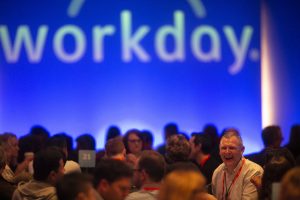The world of HCM (human capital management) software is a small one, in fact two of the leaders in the space, PeopleSoft and Workday, were founded by the same person. After the tumultuous deal process of Oracle acquiring PeopleSoft in 2005, people have been speculating about the eventual demise of the software. And that speculation continues until today. While PeopleSoft continues to exist, many wonder when Oracle will finally phase it out. Meanwhile, Workday continues to outperform by all measures and as a result is a darling of the SaaS industry. Recently Workday announced its latest acquisition and it’s an intriguing one.
HCM software platforms offer an array of solutions and while one may think all functions have been addressed, new needs are consistently identified. The latest problem to be solved by technology is the friction in the credential verification process. With the fast pace nature and competitiveness of the talent acquisition game, it’s become imperative that human resources can quickly verify the identity, skills and credentials of each target candidate. In many cases, the verification process is still run manually, creating a bottleneck at the tail end of the recruiting process.
Workday found a gem in Trusted Key, which was started by former executives from Microsoft and Oracle. The company created a verification system based on blockchain technology that is not only more accurate but much faster than any human process.
“While the world of work has been transformed by technology, credentials haven’t changed much — today, they’re still largely offline and paper-based, and verifying a credential often requires a lot of manual effort and time,” said Jon Ruggiero, senior vice president at Workday, in a blog post. “With our new platform, Workday wants to change that by bringing credentials into the digital age.”
Trusted Key enables companies, primarily in the financial sector, to deploy secure and frictionless know-your-customer solutions, password-less authentication systems, and enhanced document signing procedures, all based on the user’s real-world identity. Its solution suite dubbed The Trusted Key Digital Identity Platform provides a secure, reusable, and privacy-preserving method for users to bring online their definitive identity documents (driver’s license, passport etc.) and turn them into Trusted Key Cryptographic Credentials.
Users can then use such credentials to securely establish their real-world identity to any online service or app, authenticate themselves to any app or service without the use of passwords, digitally sign documents, and perform other identification protocols online and through a mobile device.
“Credentialing is an HR process in dire need of an update — the current verification process is manual, and it can take weeks to recruit and onboard workers. We’ve heard from customers that they need a faster, more efficient way to verify skills and industry certifications, ensuring that workers are properly credentialed and in compliance,” Ruggiero continued. “At the same time, there are changes in the workforce itself. It’s evolving to be more mobile, distributed, and diverse with different types of workers — contractors, gig workers, salaried, and hourly — and virtual team members are common in any global organization.”
























